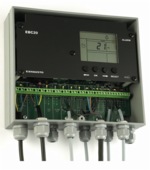New controller for chimney automation systems



Baxi survey reveals care home leaders need support to achieve heat decarbonisation goals
Baxi recently surveyed over 400 senior and middle management care home managers in both the private and public sector this summer in an effort to understand the enablers required to help decarbonise the sector.
CIBSE launches Society of Vertical Transportation to elevate standards worldwide
CIBSE has officially launched the Society of Vertical Transportation (SoVT), an international professional community for individuals and organisations working across the design, engineering, installation and innovation of lifts, escalators and emerging vertical mobility systems.